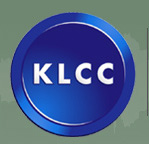EWEB Considering Change to Downtown Network

August 12, 2013
By Karen Richards
Across the country, investments in alternative energy are increasing as costs fall and efficiency rises. As a result, utilities are rethinking their long-term business models. As KLCC's Karen Richards reports, the Eugene Water and Electric Board is considering changing the way it delivers power to the downtown core.
Anna Scott, Energy Analyst for LCC shows me the roof of Lane Community College’s downtown campus:
Scot: “So then, here’s our 12KW solar electric system. As you can see it’s got three different types of modules on it.”
The three styles of panels allow students to study their functions, but they aren’t major contributors to the energy efficiency of the building. LCC did earn a LEED platinum status here, but not in the way it first envisioned. Anna Scott:
Scott: “In the beginning, we were all trying to achieve a net-zero building. So, in order to do that, most net-zero buildings have a lot of emphasis on solar electric in order to offset the amount of electricity they would use. So, early on we knew that there was a constraint with the network.”
In today’s energy environment, Eugene Water and Electric Board’s downtown distribution system has limitations. Most of EWEB's territory uses a "radial" system, which you can picture like branches off a trunk. If power goes out, an entire branch shuts down. The "network" system downtown is like a web or mesh. If a transformer fails, there are other pathways for power to get where it's needed.
Alan Fraser is an energy management engineer with EWEB. He says residential solar systems are set up to feed back into the grid. But that can't happen downtown:
Fraser: “The circuit protection of the downtown network cannot allow any reverse power flow. So if a generator ever exceeds their own load, then the system starts to isolate that load and thus shutting off the customer.”
Given EWEB's limits of solar electric, LCC got creative with its design. They incorporated geothermal water heating, water conservation and re-use, as well as fine-tuned ventilation systems. But, Fraser says, under EWEB’s current system, LCC has to have a shut off for their solar electric:
Fraser: “As the generation gets to be 50% of the building load, we have them turn off the generation.”
EWEB is studying the bottom-line costs of changing the system. Fraser says they need to replace the 50- to 60-year old equipment with more modern devices, anyway:
Fraser: “We’re forced with spending some money downtown on that system. It’s just whether we’ll do it radial or network.”
Converting to a radial system would require greater up-front costs, including digging more underground vaults. But it would allow downtown Eugene to take advantage of more energy sources. LCC’s solar panels are a rarity in the 40-square-block downtown core. In fact, from above, the area can virtually be defined by the ring of solar arrays just outside its border.
I asked Anna Scott whether LCC would consider additional solar power if the downtown system changed:
Scott: “Absolutely. We would enjoy the opportunity to take a closer look at our existing properties. … assess their roofs for value .. Perhaps even come back to this building after we get it up and running as smoothly as we want it to.”
EWEB’s study will be completed by late August. Results will be presented to its board in September.
Copyright 2013, KLCC.
|


